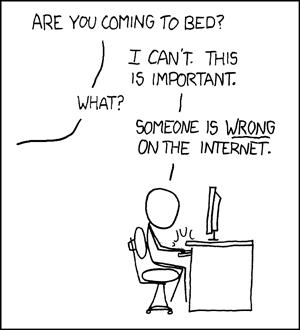On a recent episode of Teaching in Higher Ed, Bonni Stachowiak invokes the “free like a free puppy” simile. I know this phrase from the open source community, which for a long time drew the distinction between “free like beer” (having no monetary cost) and “free like speech” (referring to having the right to change, hack, express yourself, with a tool or platform). This was eventually expanded to include “free like a puppy” to point out that open resources do require investment to get and keep them working, and a higher level of investment to develop them and keep them healthy and relevant as time goes on.
Bonni says that people she works with have started talking about sending some of their metaphorical “puppies” to go “live on a farm upstate,” and she encourages us to evaluate our “puppy” projects and ask if they’re really bringing us the joy that they should.
Which was a funny thing to hear as I was giving the dog her morning walk.
Bella is our pandemic puppy. She was a big shaggy older dog at the pound, who looked up at me and said “Sir, I’d really just like to go home please, I’m old and arthritic and I’ll lie on the couch and be no trouble at all.”
Then after about 3 days, she looked up at me and said “hey, it turns out I was just stiff because no one was exercising me. Let’s walk more. In fact, let’s run. Omigod is that a deer come on let’s CATCH A DEER…”
(She did not catch a deer, or a squirrel, or a raccoon, not for lack of trying. She did get the drop on a skunk once… bad for us, worse for the skunk.)
I was also assured that the dog would be my son’s and wife’s responsibility, and all I had to do was tolerate it. I have been informed by the law offices of BigSadEyes and PerkyEars that Bella was not a signatory to that agreement and will not be bound by it. Even when they do walk the dog, she comes home and gives me the “OK, I’m warmed up now, let’s go back out” look.
So it’s kind of funny to hear Bonni talking about projects which consume resources you hadn’t planned on, at the same time I’m trying to convince the dog to stop sniffing everything so I could get home and get changed and go to work.
(She did not stop sniffing everything. I got to work, eventually.)
So while the “send some puppies to the farm” metaphor sat a little heavy with me, I do like the idea of “evaluating” your puppy-projects. What do they need, and what do you need from them? Do you need to give some of your commitments more attention, and are there others which do need to go away? What’s worth doing better, and what’s worth not doing yourself.
I can’t help but think that I have a dog who adores me precisely because someone else said they couldn’t keep up with 80 pounds of running, barking, shedding dog. My colleagues will rightfully roll their eyes and point out that handing off projects is one of my real weak spots, so I’m not saying it’s easy, but not unlike an animal, it’s fairer and easier to find a project its “forever home” before I let it get neglected or in the way of my other commitments.
(Tangent: this reminds me of the terrific episodes of All The Things ADHD in which Lee Skallerup Bessette and Aimée Morrison discuss Marie Kondo and the way things and arrangements of things can “spark joy” or not. Maybe someone can build out that connection in the comments because what would really spark joy for me is hitting that Publish button…)









